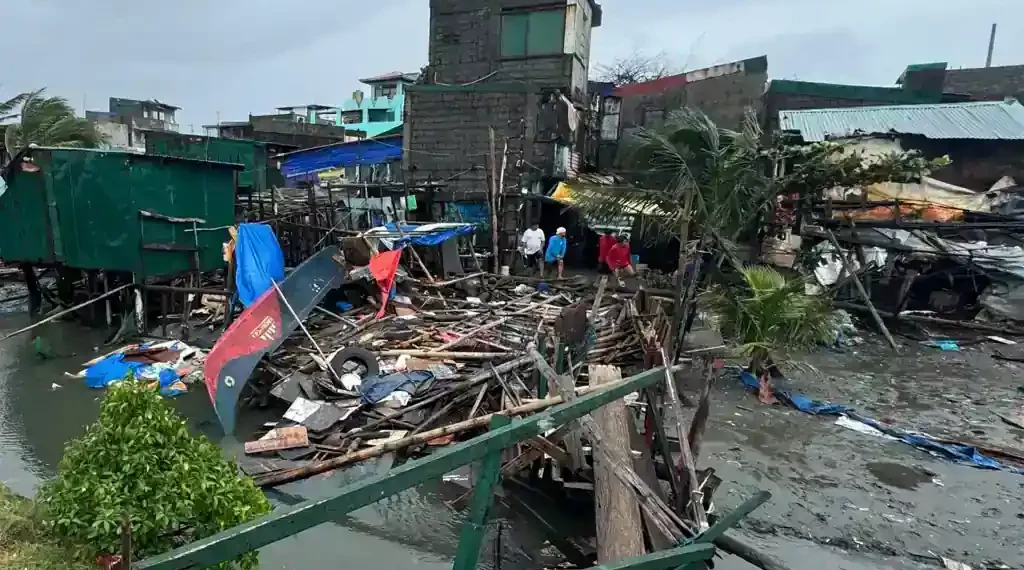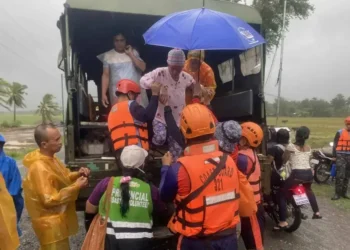Typhoon Fung-Wong has moved away from the Philippines after unleashing torrential rain, strong winds, and deadly landslides that left at least 18 people dead and forced over a million residents into evacuation centers. The weakened storm is now tracking northwest over the South China Sea toward Taiwan, where it could make landfall later this week.
Destruction Across Northern Philippines
Fung-Wong struck the northeastern province of Aurora on Sunday as a super typhoon, packing maximum sustained winds of 185 kilometers per hour (115 miles per hour). The storm, which spanned nearly 1,800 kilometers (1,100 miles), battered mountainous regions and agricultural areas before exiting into the South China Sea early Monday, according to the Philippine Atmospheric, Geophysical and Astronomical Services Administration (PAGASA).
At least 18 people were reported dead across several provinces due to flash floods, landslides, and electrocution, officials from the Office of Civil Defense confirmed. The fatalities were recorded in Catanduanes, Eastern Samar, Nueva Vizcaya, Mountain Province, and Ifugao.
In Nueva Vizcaya, three children were killed and four others injured when a landslide buried their home, local police told the Associated Press. Another landslide in nearby Kalinga province killed two villagers, with two others reported missing.
Mass Evacuations and Widespread Damage
More than 1.4 million people sought safety in evacuation centers or the homes of relatives before the typhoon’s landfall. As of Tuesday, around 240,000 people remained displaced, according to disaster-response officials.
Flooding affected at least 132 northern villages, leaving residents trapped on rooftops as waters rose rapidly. More than 4,100 homes were damaged, while power outages and road blockages further hampered rescue efforts.
“While the typhoon has passed, its rains still pose a danger in certain areas,” said Bernardo Rafaelito Alejandro IV of the Office of Civil Defense. “We’ll continue rescue and relief operations today, especially in northern Luzon and Metro Manila.”
Government Response and State of Emergency
President Ferdinand Marcos Jr. declared a state of emergency across affected regions as the country continued to recover from the devastation left by Typhoon Kalmaegi just a week earlier. Kalmaegi had struck the central Philippines, killing at least 232 people before moving on to Vietnam, where five others died.
Fung-Wong, known locally as “Uwan,” compounded the destruction, leading to the suspension of schools, government offices, and transportation services. The Philippine Coast Guard reported that more than 6,600 passengers and cargo workers were stranded in ports after ships were barred from sailing due to rough seas.
Several domestic and international flights were canceled over the weekend and into Monday as the storm disrupted travel nationwide.
A Nation Regularly Hit by Disasters
The Philippines experiences around 20 tropical cyclones each year, making it one of the most disaster-prone countries in the world. Its geographical location along the Pacific “Ring of Fire” also subjects it to frequent earthquakes and volcanic activity.
Under the country’s weather classification, any tropical cyclone with sustained winds exceeding 185 kph (115 mph) is considered a “super typhoon,” emphasizing the potential for catastrophic damage.
Meteorologists have warned that the increasing intensity of storms like Fung-Wong may be linked to climate change, which has intensified rainfall patterns and sea temperatures in the Pacific region.
Taiwan Braces for Impact
As of Monday evening, Fung-Wong had weakened into a tropical storm but continued to move northwest toward Taiwan at approximately 25 kph (15 mph). Taiwanese authorities have issued early warnings for heavy rain, possible flooding, and strong coastal winds, with the storm projected to approach the island by Thursday.
Meteorological agencies in Taipei have activated contingency measures, urging residents to secure property and prepare for potential evacuations in low-lying and mountainous areas.
While Fung-Wong’s strength has diminished, forecasters caution that it could still deliver heavy rainfall and landslides, especially in central and southern Taiwan.
Regional Impact and Recovery Efforts
Humanitarian organizations and local agencies in the Philippines have begun distributing food, water, and emergency supplies to affected communities. The National Disaster Risk Reduction and Management Council (NDRRMC) reported ongoing operations to clear roads and restore electricity in several northern provinces.
International aid agencies are monitoring the situation closely, with neighboring countries offering assistance as the Philippines faces back-to-back storms within a short span.
For residents already struggling from Typhoon Kalmaegi’s aftermath, Fung-Wong’s arrival underscored the country’s continued vulnerability to severe weather events.
This article was rewritten by JournosNews.com based on verified reporting from trusted sources. The content has been independently reviewed, fact-checked, and edited for accuracy, tone, and global readability in accordance with Google News standards.
Stay informed with JournosNews.com — your trusted source for verified global reporting and in-depth analysis. Follow us on Google News, BlueSky, and X for real-time updates.
JournosNews.com follows Google News content standards with original reporting, verified sources, and global accessibility. Articles are fact-checked and edited for accuracy and neutrality.













